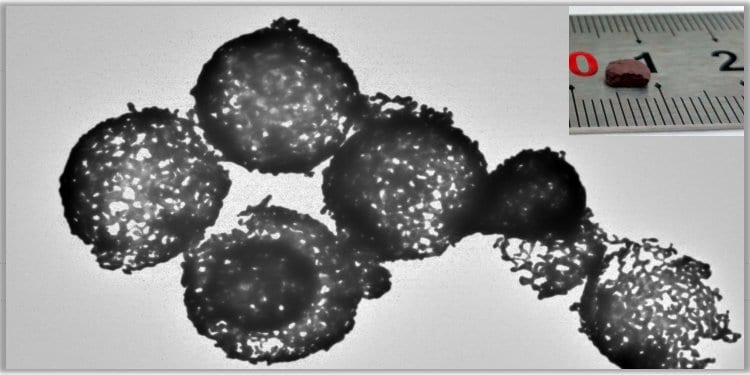Porous Au is a functional material of special interest. Compared to solid Au, it possesses high porosity and specific surface area, which endow the material with better performance in many areas. For examples, it will bring 1.34 times higher laser to X-ray conversion efficiency compared to solid Au targets, it also is more sensitive in catalysis and sensing, etc. Although various kinds of porous Au like powders and films have attracted much attention, the preparation and application of monolithic porous Au with ultra-high porosity are limited, since it is difficult to take into account both the good structure and ultra-high porosity.
To prepare monolithic porous Au, the template-dealloying is the mainstream method. It has been proven with advantages in preparing porous Au with multimodal pore sizes and controllable pore features. The research group at Sichuan University led by Prof. Lixian Lian improved the method, and a series of monolithic porous Au with different pore sizes were successfully synthesized. These materials maintained good structure and ultra-low density (1.45 % of the full density of Au) at macro scale, while possessing nano-structures on the microscopic scale. In the catalytic reduction experiments of p-nitrophenol, the materials exhibited high catalytic performance and had the advantage of being easier to be separated from the reaction solution than traditional Au-based powder/slurry catalysts. These achievements improved the controllable preparation technologies of porous Au and contributed to the application of monolithic porous Au in catalysis. In addition, the achievements may offer a reference for the preparation of other monolithic porous materials and monolithic catalysts.

















